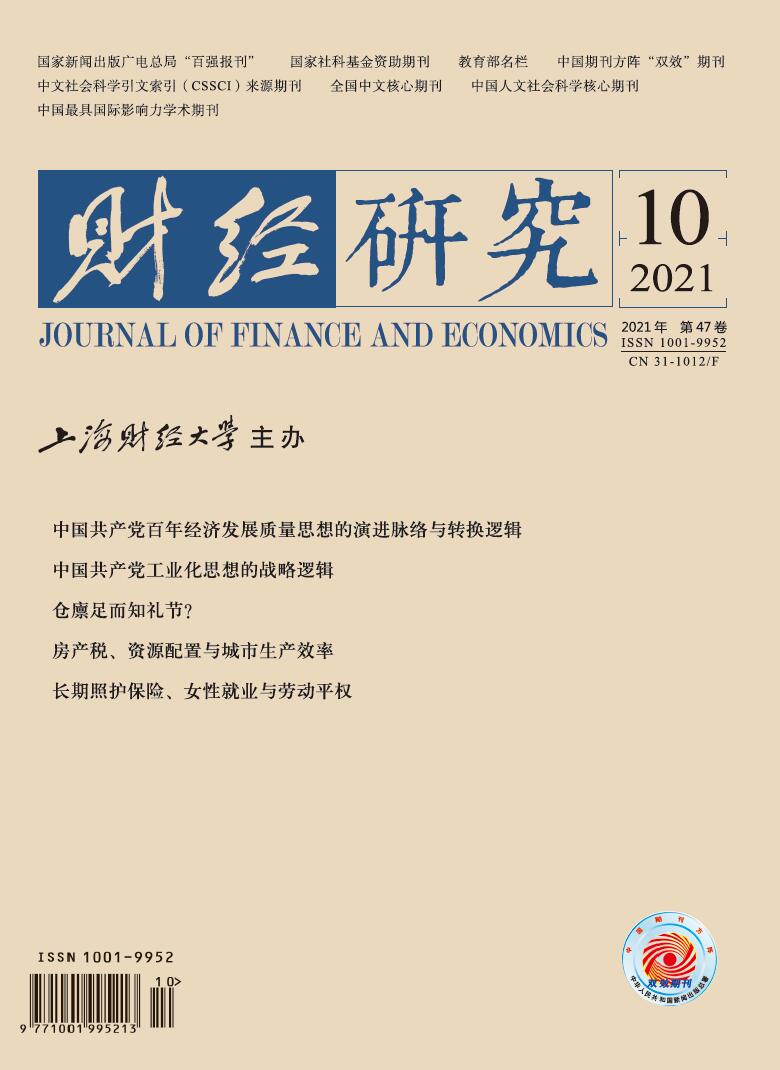青少年上网玩游戏、看电视花费的时间大幅增加,这一现象逐渐成为了全社会担忧的问题。现有关于同伴效应的研究中还没有关于使用电子媒介同伴效应的研究。文章使用“中国教育追踪调查”(CEPS)2013−2014学年七年级和九年级的随机分班数据分析青少年上网玩游戏和看电视的班级同伴效应。实证研究发现,上网玩游戏(看电视)的参与行为和花费时间都存在显著的正向同伴效应,该结果在使用工具变量或伪回归等方式排除相关效应之后仍然稳健。进一步分析同伴效应的影响机制发现,同学关系越好,青少年上网玩游戏受同伴的影响越大,但该机制对看电视的同伴效应影响不显著。父母对子女上网玩游戏(看电视)的严厉程度并不能改变同伴的影响。异质性的分析发现,上网玩游戏的同伴效应在性别之间没有差异,女生看电视的行为受同伴的影响更大。
青少年使用电子媒介的同伴效应——基于班级社交网络的视角
摘要
参考文献
4 佐斌,马红宇. 青少年网络游戏成瘾的现状研究−基于十省市的调查与分析[J]. 华中师范大学学报(人文社会科学版),2010,(4):117−122. DOI:10.3969/j.issn.1000-2456.2010.04.018
5 Adachi P J C,Willoughby T. The effect of violent video games on aggression:Is it more than just the violence?[J]. Aggression and Violent Behavior,2011,16(1): 55−62. DOI:10.1016/j.avb.2010.12.002
6 Ali M M,Dwyer D S. Social network effects in alcohol consumption among adolescents[J]. Addictive Behaviors,2010,35(4): 337−342. DOI:10.1016/j.addbeh.2009.12.002
7 Clark A E,Lohéac Y. “It wasn’t me,it was them!” Social influence in risky behavior by adolescents[J]. Journal of Health Economics,2007,26(4): 763−784. DOI:10.1016/j.jhealeco.2006.11.005
8 Devís-Devís J,Peiró-Velert C,Beltrán-Carrillo V J,et al. Screen media time usage of 12-16 year-old Spanish school adolescents:Effects of personal and socioeconomic factors,season and type of day[J]. Journal of Adolescence,2009,32(2): 213−231. DOI:10.1016/j.adolescence.2008.04.004
9 Eisenberg D,Golberstein E,Whitlock J L. Peer effects on risky behaviors:New evidence from college roommate assignments[J]. Journal of Health Economics,2014,33: 126−138. DOI:10.1016/j.jhealeco.2013.11.006
10 Escardíbul J O,Mora T,Villarroya A. Peer effects on youth screen media consumption in Catalonia(Spain)[J]. Journal of Cultural Economics,2013,37(2): 185−201. DOI:10.1007/s10824-012-9177-3
13 Gentile D A,Lynch P J,Linder J R,et al. The effects of violent video game habits on adolescent hostility,aggressive behaviors,and school performance[J]. Journal of Adolescence,2004,27(1): 5−22. DOI:10.1016/j.adolescence.2003.10.002
14 Gong J,Lu Y,Song H. The effect of teacher gender on students’ academic and noncognitive outcomes[J]. Journal of Labor Economics,2018,36(3): 743−778. DOI:10.1086/696203
15 Gould E D,Lavy V,Paserman M D. Does immigration affect the long-term educational outcomes of natives?Quasi-experimental evidence[J]. The Economic Journal,2009,119(540): 1243−1269. DOI:10.1111/j.1468-0297.2009.02271.x
16 Greene W. Testing hypotheses about interaction terms in nonlinear models[J]. Economics Letters,2010,107(2): 291−296. DOI:10.1016/j.econlet.2010.02.014
17 Griffith A L,Rask K N. Peer effects in higher education:A look at heterogeneous impacts[J]. Economics of Education Review,2014,39: 65−77. DOI:10.1016/j.econedurev.2014.01.003
18 Guryan J,Kroft K,Notowidigdo M J. Peer effects in the workplace:Evidence from random groupings in professional golf tournaments[J]. American Economic Journal:Applied Economics,2009,1(4): 34−68. DOI:10.1257/app.1.4.34
19 Ho S M Y,Lee T M C. Computer usage and its relationship with adolescent lifestyle in Hong Kong[J]. Journal of Adolescent Health,2001,29(4): 258−266. DOI:10.1016/S1054-139X(01)00261-0
21 Kawaguchi D. Peer effects on substance use among American teenagers[J]. Journal of Population Economics,2004,17(2): 351−367. DOI:10.1007/s00148-003-0158-x
22 Kuss D J,Griffiths M D. Internet and gaming addiction:A systematic literature review of neuroimaging studies[J]. Brain Sciences,2012,2(3): 347−374. DOI:10.3390/brainsci2030347
23 Lee L F. Identification and estimation of econometric models with group interactions,contextual factors and fixed effects[J]. Journal of Econometrics,2007,140(2): 333−374. DOI:10.1016/j.jeconom.2006.07.001
24 Lee L F,Liu X D,Lin X. Specification and estimation of social interaction models with network structures[J]. The Econometrics Journal,2010,13(2): 145−176. DOI:10.1111/j.1368-423X.2010.00310.x
25 Ma Y,Hou X,Huang J,et al. Educational inequality and achievement disparity:An empirical study of migrant children in China[J]. Children and Youth Services Review,2018,87: 145−153. DOI:10.1016/j.childyouth.2018.02.026
26 Manski C F. Identification of endogenous social effects:The reflection problem[J]. The Review of Economic Studies,1993,60(3): 531−542. DOI:10.2307/2298123
27 Marshall S J,Gorely T,Biddle S J H. A descriptive epidemiology of screen-based media use in youth:A review and critique[J]. Journal of Adolescence,2006,29(3): 333−349. DOI:10.1016/j.adolescence.2005.08.016
28 Nathanson A I. Parents versus peers:Exploring the significance of peer mediation of antisocial television[J]. Communication Research,2001,28(3): 251−274. DOI:10.1177/009365001028003001
29 Suess D,Suoninen A,Garitaonandia C,et al. Media use and the relationships of children and teenagers with their peer groups:A study of Finnish,Spanish and Swiss cases[J]. European Journal of Communication,1998,13(4): 521−538. DOI:10.1177/0267323198013004005
30 Willoughby T. A short-term longitudinal study of Internet and computer game use by adolescent boys and girls:Prevalence,frequency of use,and psychosocial predictors[J]. Developmental Psychology,2008,44(1): 195−204. DOI:10.1037/0012-1649.44.1.195
31 Zimmerman D J. Peer effects in academic outcomes:Evidence from a natural experiment[J]. Review of Economics and Statistics,2003,85(1): 9−23. DOI:10.1162/003465303762687677
引用本文
董彩婷, 陈媛媛. 青少年使用电子媒介的同伴效应——基于班级社交网络的视角[J]. 财经研究, 2021, 47(10): 125-139.
导出参考文献,格式为:






 3873
3873  6650
6650

